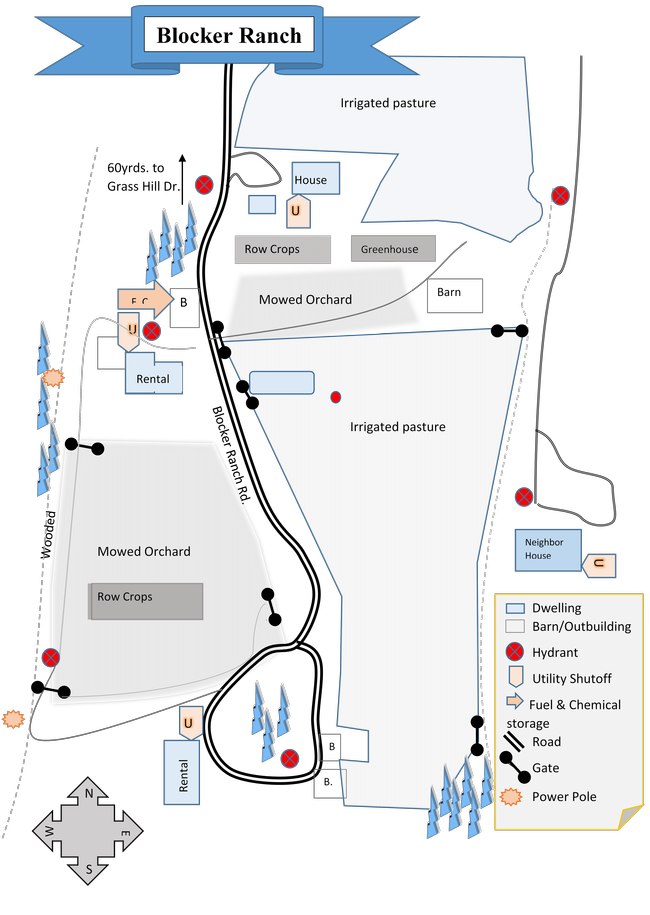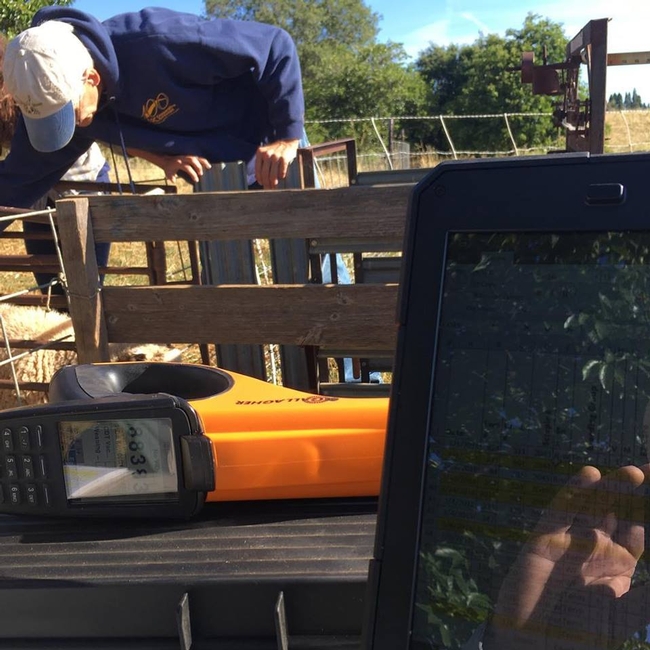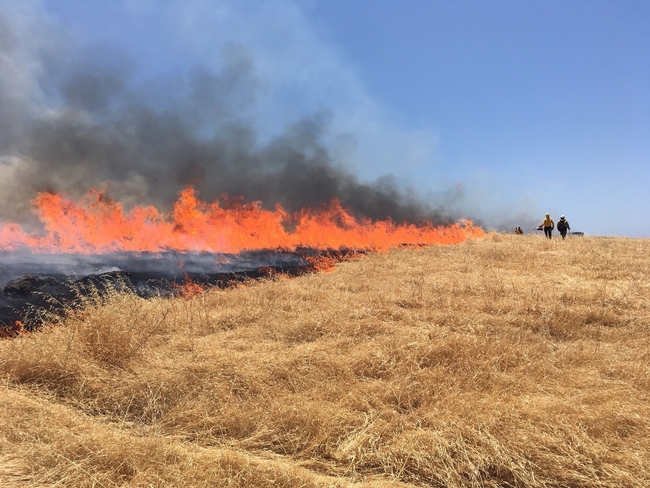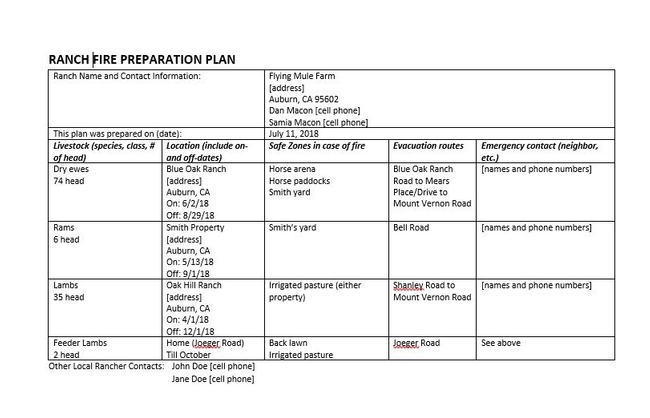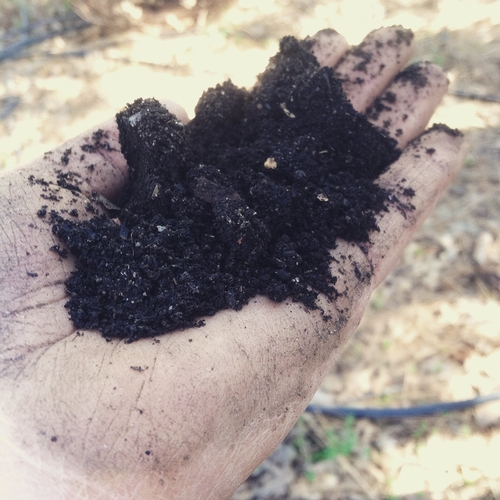Posts Tagged: planning
Farm Preparation for Wildfire and Other Emergencies
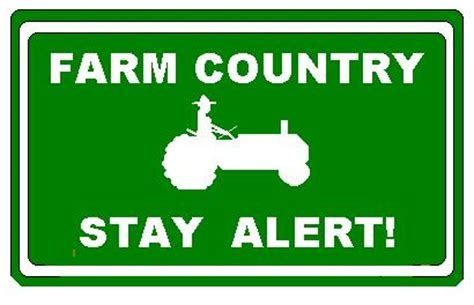
According to many state fire officials, we no longer have simply a ‘Fire Season' but a ‘Fire Year'. In winter drought conditions, some parts of our region do not receive enough rain to mitigate fire danger. It is more important than ever to constantly assess your farm for fire safety and be prepared for any emergency.
The following information will assist you in thinking through four important areas of disaster preparedness for your farm: Paperwork & Plans, Farm Map & Layout, Tools & Machinery, and Operations & Training.
Paperwork & Plans:
- Conduct a fire risk assessment and record your findings. Assess brush clearance, road access, evacuation routes, defensible space, topography (fire climbs hills quickly), and water sources. If needed, make a plan to address any critical issues.
- Evaluate current insurance coverage to ensure adequate coverage for farm assets. Consider livestock, crops, buildings, and equipment.
- Keep up-to-date production, marketing, and financial records. Check the Foothill Farming website resources on risk management and business planning tools for templates. Scan or store them on a USB flash drive or external hard drive.
- Make a farm communication plan. What happens if you are not home during a disaster situation? Do you have phone numbers and good relationships with neighbors? Are the phone numbers written down for your family members and employees as well?
- Create a farm emergency plan, use the following free online templates or use them as a guide to create one more suitable for your own farm.
- http://ucanr.edu/sites/placernevadasmallfarms/files/289237.pdf
- https://www.formsbank.com/template/325465/emergency-plan-for-farm-template.html?page=5
- http://www.maeap.org/uploads/files/EMERGENCY_PLANNING_fillable_Form_E2575-ET_AA.pdf
- http://www.ncagr.gov/disaster/Farm-Emergency-Plan-Template.pdf
Developing a farm emergency plan before a disaster can help you respond more rapidly and objectively.
Farm Map & Layout:
- A farm map should be part of your emergency plan. Create a map including symbols and a key for the following:
- Homes, barns, and outbuildings.
- Utility shutoffs.
- Power and utility lines.
- Fuel and chemical storage.
- Roads and bridges (including weight limitations).
- Water sources and delivery systems.
- Gates (including combinations).
- Fuel breaks.
- Any other possible farm hazards.
You may include brief general guidance for emergency responders on the map as well.
- A well-maintained and accessible water source is critical. If possible, consider a water source for fire trucks. An accessible source includes:
- Defensible space.
- Gravel road access within 12 feet of water source.
- Minimum 45-foot radius turnaround close by.
- Post permanent signs indicating water source location.
- For more detailed information about what is needed at a water source, check out this information from Oregon State Extension https://catalog.extension.oregonstate.edu/sites/catalog/files/project/supplemental/pnw618/pnw618-chapter6.pdf
- Farm design should incorporate these principles, especially around structures. Create at least 100 feet of defensible space by:
- Removing flammable objects from around barns or dwellings (e.g. flammable vegetation, feed bags, cardboard boxes, plant debris, fuel, etc.).
- Breaking up fuel continuity by separating plants from each other in gardens and landscape design.
- Taking care in selecting, locating, and maintaining trees.
- Post a clearly visible sign with property name and number at the entrance.
Tools & Machinery:
- Carry fire extinguishers and fire tools, especially in off-road vehicles. (e.g. trucks and tractors), CalFire requires a 5-gallon water supply and a fire tool be carried in wildland settings – consider adding this equipment to your tool box!
- Conduct frequent inspections of farm machinery for debris removal. Pay attention to hazards associated with exhaust systems and catalytic converters.
- All farms should have proper personal firefighting equipment such as shovels, hoes, and fire extinguishers that all farm employees can carry.
- Use rodent deterrents as they can chew through electrical insulation.
- Limit or postpone machinery use on high fire danger days. If use is unavoidable, plan for competing tasks before 10:00 AM.
- Stay 30 minutes after machinery use is shut off to monitor fire risk.
- More tips on preventing farm equipment fires, http://www.redrivermutual.com/wp/wp-content/uploads/Preventing-Farm-Equipment-Fires4.pdf
Operations & Training:
- Conduct an annual fire plan and equipment “refresher” for all farm personnel. Consider labeling safety equipment and fire tools on your map, with signs for your employees and family. Train folks on how to use this equipment.
- Have a routine for “red flag days” such as delaying mowing or machinery use.
- Although California law requires all electric fences to have low-impedance chargers, check frequently to ensure wires are free of materials that may cause the fence to arc. Always operate according to manufacturer directions.
- Restrict or clearly designate smoking areas.
- Include fire danger mitigation and forest management in annual planning.
Fire prevention should be a year-round activity in our fire-prone region. Be sure to consider the needs of both family and farm personnel in any emergency situation. Proper planning now will help mitigate the inevitable stress involved in farm emergencies. We would love to hear your thoughts, plans, and ideas related to disaster preparedness. Please feel free to comment below.
Working on the Business
Earlier this month, I had the opportunity to attend the Sheep Industry Innovators Conference organized by lamb processor Superior Farms at UC Davis. The conference brought together sheep producers from throughout the U.S. - both large and small. While much of the conference was focused on technology, one of the early speakers talked about business innovation and disruption - topics that apply to all types of farms and ranches!
If you're an alumnus of our Farm Business Planning Short Course, you'll be familiar with the acronyms WOTB and WITB (coined by the Ranching for Profit school). Most of us who farm or ranch prefer WITB - Working in the Business. These are tasks like transplanting tomatoes, moving sheep, or pruning apple trees. WITB, for most of us, is the kind of work that drew us to farming or ranching in the first place. WOTB - Working on the Business - often seems dull by comparison. WOTB includes activities like business planning, developing new markets, or succession planning. WOTB often involves sitting at our computers or (heaven forbid) talking to our partners or families about the farm or ranch.
Despite my dislike of WOTB work, I find that working on the business is crucial to my ranch business' success. Intentionally carving out time each month for WOTB work helps make sure I don't neglect this important work. One of the speakers at the Sheep Industry Innovators Conference offered a new insight to one of the most critical pieces of WOTB work - updating our business plans.
Steve Elliott, Global Minerals Manager for a firm called Alltech, suggested that all businesses (not just farms and ranchers, but perhaps most importantly so) should ask four questions on an annual basis:
- Where are we now?
- Where have we come from?
- Where do we want to go?
- How will we get there?
For me, these questions offer a simple, well-structured approach to evaluating our businesses. They help place questions about new production systems, marketing strategies, and capital purchases in the context of our long-term business goals. We'll be using these questions this fall when we analyze our own sheep ranching enterprise.
Mr. Elliott also talked about the difference between innovation and disruption - high-tech terms that I had never thought much about in a small-farm context. Innovation, he said, is doing something new that improves on the old way of doing things. Disruption, on the other hand, is doing something new that makes the old way obsolete. I'm still thinking on this concept - what are the new approaches or new technologies that will disrupt your approach to farming or ranching?
Finally, Mr. Elliott suggested that our creativity is improved when we slow down. I know that for me, a quiet walk is good for my body and my mind. I often think more clearly about difficult problems when I'm away from my desk. This fall, when we focus on our WOTB work for our sheep operation, I'm going to suggest that we take a walk - I suspect we'll be more creative without the distractions of emails, cell phones, or even sheep work!
My point to all of this is to remind us all about the importance of stepping back and working on (rather than in) our businesses. I raise sheep because I love the day-to-day work. I'll only get to continue raising sheep if I pay attention to the needs of my business.
Fire Season Is Not Over Yet
Local fire agencies have warned that fire season is not over. Cooler temperatures are a relief but not a stop sign for wildfire. As of last week, according to Chief Marc Bashoor at FireChief.com over 50 fires still rage in the Western United States, at varying degrees of containment, California taking the brunt of the damage. It is important that local farmers and ranchers continue to take necessary precautions against wildfires and other disasters. How can you be prepared? The following blog was written by Livestock and Natural Resource Adviser, Dan Macon.
Fire Preparation for Ranchers - Writing Down Your Plan
- Author: Dan Macon Posted: July 11, 2018. Updated Aug 27, 2018.
“In June, I wrote about preparing our ranches for fire (Fire Season is Here: Is Your Ranch Ready?). Since that time, we've seen large fires in ranching country. Each of these fires is a stark reminder that we live and raise livestock in a fire-prone landscape.
In July, a number of ranchers from Placer County met with law enforcement, fire and animal control officials to discuss the emergency preparation and response issues unique to commercial-scale ranching operations. As we talked, I realized that there are several factors that make planning for and responding to wildfire (and other emergencies, like flooding) challenging for these kinds of ranching businesses:
- Many ranches have livestock in multiple locations.
- Many leased pastures are simply pastures; there is no landlord or other resident on site.
- Because of this, the physical address of the pasture may not be readily apparent.
- Often, the number of livestock at a particular site may be more than can be easily evacuated in a single load in a stock trailer.
- Access during a fire may be difficult due to law enforcement road blocks. Since many of us lease pastures, gaining access (as opposed to staying at our home places in the event of an evacuation) can be problematic.
There are several things we can do to help address these issues. First, we should write down the locations where our livestock are grazing at least on a seasonal basis. What's the address? How many animals are at each location, and what classes of animals are there? What are the evacuation routes you'd be likely to use to get animals out of harms way? If you couldn't evacuate the animals, are there safe zones on or nearby the location where animals could be moved? Is there an on-site landlord or resident, or perhaps a neighbor, that you could call in an emergency situation? Finally, are there 2 or 3 nearby ranchers who could help you? Here's a sample of my one-page plan:
Access to leased pastures during a large-scale fire or other emergency may be more problematic. On Monday, we learned from CalFire that there is a liaison officer within the agency's incident command structure who can help facilitate access to livestock during a multi-day fire. Short-term access may be more difficult - we're working with our local emergency responders to find ways to address this while also protecting public and fire fighter safety.
What steps do you take to prepare for the possibility of wildfire? I hope you'll share your ideas and questions in the comment section below!
And finally, I'm working on organizing similar meetings with first responders in Nevada, Yuba and Sutter Counties. If you operate a commercial ranch, or lease land to a rancher in one of these counties, and would like to get involved, please contact me at dmacon@ucanr.edu.”
Watch for a follow-up blog that will focus on farmer preparation for wild fire or other emergency threats.
Planning for Drought Resilience
A quick scan of drought related news is not good for my anxiety levels. A March 21st article in The Atlantic reports how our warmest winter in 100 years (by 4.4 degrees on average) is impacting agriculture across California: 17,000 farmers lost their jobs in 2014 and cost the ag sector $2.2 billion. For the first time in 75 years, the Department of Water Resources Sierra snowpack survey for April 1st had no snow to survey. The 2012-2014 California drought is reported to be the worst in 1,200 years! I am growing tired of watching the weather forecast as well. The pattern thus far: a storm is forecast, the storm arrives and delivers a fraction of what was expected. My new plan is to stop focusing on the lack of rain and snow and start getting serious about building drought resilience into our farm plan.
The reality is that we won't be able to sink a new well or dig a new pond. We are a small farm with very limited capital purchasing power. Does our lack of financial wiggle room mean that this drought may put us out of business? I am hopeful that we can continue to farm within the new parameters that this drought may impose on our business. But we won't be able to do this without a plan.
What is the worst case scenario on your farm or ranch? On my own farm, the worst case scenario would be the complete suspension of our irrigation water allotment. If our water allotment was drastically decreased, could we still make a profit from our farm? Here's a look at what we are planning to do to increase the drought resilience of our land and business.
A simple first step is to increase our soil organic matter. We traditionally grow both summer and winter cover crop on fallow ground. This summer's growing season, we are taking even more land out of row crop production and will plant more summer cover crops. Our favorite is sorghum Sudan grass. Unlike Johnson grass which it is very similar to in appearance, Sudan grass does not grow rhizomes and spread underground. It requires very little water and is a great way to protect open ground in the summer. According to UCCE Horticulture and Small Farms Advisor, Cindy Fake, a 1% increase in soil organic matter results in an additional 16,000 gallons of water retained per acre foot of soil! That is a lot of water. This ATTRA publication has a lot of information on creating drought resilient soils: http://cses.uark.edu/ATTRA_drought.pdf
Another goal this season is to understand exactly how much forage our pigs are able to access from the irrigated pastures we raise them on. I want to know exactly what it would cost if we had to buy in all of the feed for our animals. Understanding the financial impact that the loss of our irrigation water would have on our farm will help us make decisions about the size of our hog herd. If we decrease by 25%, can we keep our feed bill affordable? If there was no water at all, how much would it cost to keep our breeding animals alive?
We irrigate our row crops as efficiently as we can. We deliver water through drip tape and irrigate in the evenings once the day has cooled and evapotranspiration loss is decreased. But I am finding that this is still not enough to make our farm truly drought resilient. I need to know at what point in the growth cycle the crops I produce are most susceptible to water stress. In other words, how can I achieve profitable yields with the least amount of water possible? If I had to use my residential water supply to grow a crop, what is the least amount of water I could utilize without seriously impacting yield? Here is a link to a publication on water efficiency and the critical periods for water stress in orchard crops and vegetables: http://ucanr.edu/sites/placernevadasmallfarms/files/180093.pdf.
Understanding the economics of each of my crops is vital to drought resilience. I need to know which crops to prioritize in the face of limited irrigation water. Are dahlias or sunflowers a more profitable crop for us? Can we increase our early season production and limit production when the temperatures hit the high 90s? I cannot make these decisions without a thorough understanding of the income and expense associated with each crop. The crop metric calculators created by UC Extension can assist you in determining the profitability of each crop you grow. http://ucanr.edu/sites/placernevadasmallfarms/UCCE_Enterprise_Calculators/. By combining my understanding of which crops need water and when with my knowledge of income and expense for each crop, I can begin to create my drought contingency crop plan.
Out of habit, I just checked the weather forecast and saw that some rain is predicted for the end of the week. The predicted moisture will help the cover crop and pasture grow, but it won't alter the long term effects of this drought.
News links and References:
http://www.theatlantic.com/business/archive/2015/03/the-economics-of-californias-drought/388375/
http://www.water.ca.gov/news/newsreleases/2015/040115snowsurvey.pdf
Scott, H.D., L.S. Wood, and W.M. Miley. 1986. Long-term effects of tillage on the retention and transport of soil water. Arkansas Water Resources Research Center. Publication Number 125. 39 p.
Farm and Ranch Rules and Regulations
I like to be organized, so when we started our small farm in 2010 it didn't feel quite right not to have a checklist of requirements to become a legitimate operation. Did we need a business license, our scale certified, or a food safety inspection? Often, we found we needed a piece of paperwork by chance while looking for outlets for our produce, flowers, or nursery starts. You need a Producer's Certificate to sell at the farmers market we wanted to attend, you now need to follow the “California Small Farm Food Safety Guidelines” to get a Producer's Certificate (as of January 1, 2015 you check a box on the form saying you do), and you must have liability insurance. That adds up to three checks off the list from following through with selling at a Certified Farmers' Market. Two more checks for our farm since we choose to be organic: register organic with the state, and certify organic with a third party agency.
Many farmers have followed the path to paperwork like we have; necessary leads, asking mentors, and researching the vast sea of information on-line. We also follow relevant social media and attend UC Extension events and hear about issues to be aware of. Currently we are waiting to see how the Food Safety Modernization Act (FSMA) will impact our small farm.
In the past five years, there are more rules, and more licenses to acquire, so hopefully this checklist will boost your confidence that you are up to date. Please keep in mind that by the time I finish this blog posting there could be another one to add, so always check for the most current information.
OSA 99C Farm and Ranch Rules and Regulations Checklist


